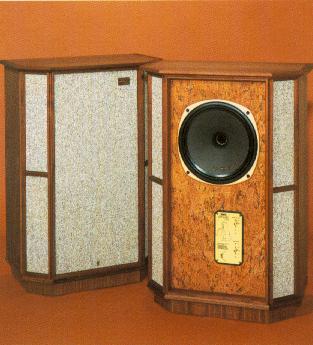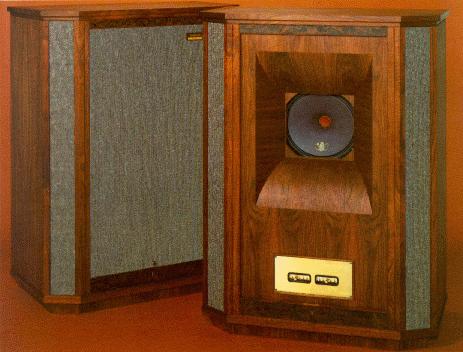




Sensivity
93dB
for 2.83 volt at 1 metre
Maximum SPL
113 dB at 1 m
for 100 watt RMS
117 dB at 1 m
for 250 watt peak
Nominal Impedance
8 ohm
Minimum Impedance
5.5 ohm
Frequency
35 Hz - 25 kHz (port mid position)
Response
+-3 dB
Crossover
Frequencies
1.3 kHz
Crossover Type
Bi-Wired, 1st order LF
Hard-Wired, 1st order HF
Passive, low-loss,
time comprnsated
Type 1134
Driver Type
10-inch
Dual Concentric
High Compiliance
Type 2598
Enclosure Type
Dual Variable
Distributed Port System
Enclosure volume 68 litre
Enclosure
700x486x310 mm
(HxWxD)
Enclosure weight 22 kg complete
Packed dimencions
850x525x380 mm
(HxWxD)
Packed weight 27 kg
Enclosure material
Solid walnut
with 18-mm particle board,
crossbrasing and very heavy
internal damping.





Sensivity
99dB
for 2.83 volt at 1 metre
Maximum SPL
120 dB at 1 m
for 120 watt RMS
126 dB at 1 m
for 500 watt peak
Nominal Impedance
8 ohm
Minimum Impedance
5.5 ohm
Frequency
18 Hz - 22 kHz
Response
+-3 dB
Crossover
300 Hz acoustical
Frequencies
1.0 kHz electrical
Crossover Type
Bi-Wired,
Hard-Wired,
Passive, low-loss,
time comprnsated
Type 1109
Driver Type
15-inch
Dual Concentric
High Compiliance
Type 3889/W
Enclosure Type Compound Horn
Enclosure volume 530 litre
Enclosure
1395x980x560 mm
(HxWxD)
Enclosure weight 138 kg complete
Packed dimencions
1590x1080x660 mm
(HxWxD)
Packed weight 154 kg
Enclosure material
Solid walnut
with 25-mm birch ply,
crossbrasing and very
heavy internal damping